-
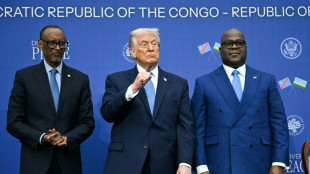 Signing up to DR Congo peace is one thing, delivery another
Signing up to DR Congo peace is one thing, delivery another
-
'Amazing' figurines find in Egyptian tomb solves mystery

-
 Palestinians say Israeli army killed man in occupied West Bank
Palestinians say Israeli army killed man in occupied West Bank
-
McLaren will make 'practical' call on team orders in Abu Dhabi, says boss Brown

-
 Stocks rise as investors look to more Fed rate cuts
Stocks rise as investors look to more Fed rate cuts
-
Norris completes Abu Dhabi practice 'double top' to boost title bid
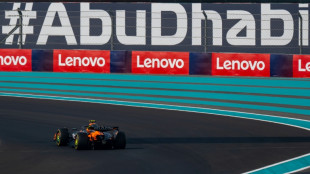
-
 Chiba leads Liu at skating's Grand Prix Final
Chiba leads Liu at skating's Grand Prix Final
-
Meta partners with news outlets to expand AI content

-
 Mainoo 'being ruined' at Man Utd: Scholes
Mainoo 'being ruined' at Man Utd: Scholes
-
Guardiola says broadcasters owe him wine after nine-goal thriller

-
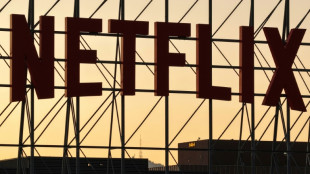 Netflix to buy Warner Bros. Discovery in deal of the decade
Netflix to buy Warner Bros. Discovery in deal of the decade
-
French stars Moefana and Atonio return for Champions Cup

-
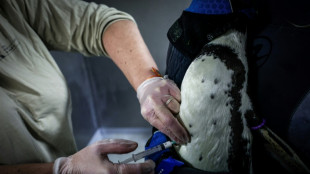 Penguins queue in Paris zoo for their bird flu jabs
Penguins queue in Paris zoo for their bird flu jabs
-
Netflix to buy Warner Bros. Discovery for nearly $83 billion
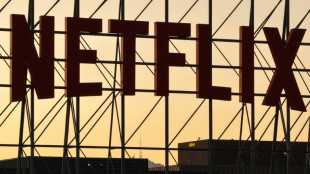
-
 Sri Lanka issues fresh landslide warnings as toll nears 500
Sri Lanka issues fresh landslide warnings as toll nears 500
-
Root says England still 'well and truly' in second Ashes Test

-
 Chelsea's Maresca says rotation unavoidable
Chelsea's Maresca says rotation unavoidable
-
Italian president urges Olympic truce at Milan-Cortina torch ceremony

-
 Norris edges Verstappen in opening practice for season-ending Abu Dhabi GP
Norris edges Verstappen in opening practice for season-ending Abu Dhabi GP
-
Australia race clear of England to seize control of second Ashes Test

-
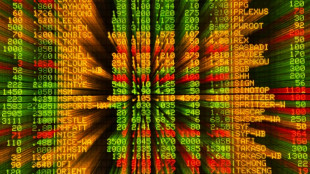 Stocks, dollar rise before key US inflation data
Stocks, dollar rise before key US inflation data
-
Trump strategy shifts from global role and vows 'resistance' in Europe

-
 Turkey orders arrest of 29 footballers in betting scandal
Turkey orders arrest of 29 footballers in betting scandal
-
EU hits X with 120-mn-euro fine, risking Trump ire

-
 Arsenal's Merino has earned striking role: Arteta
Arsenal's Merino has earned striking role: Arteta
-
Putin offers India 'uninterrupted' oil in summit talks with Modi
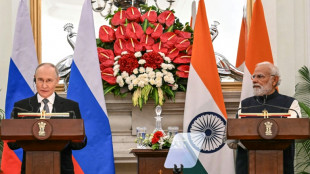
-
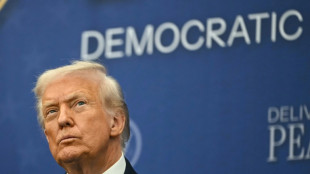 New Trump strategy vows shift from global role to regional
New Trump strategy vows shift from global role to regional
-
World Athletics ditches long jump take-off zone reform

-
 French town offers 1,000-euro birth bonuses to save local clinic
French town offers 1,000-euro birth bonuses to save local clinic
-
After wins abroad, Syria leader must gain trust at home

-
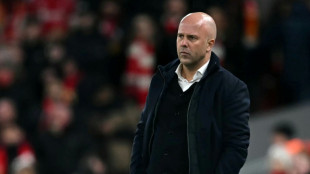 Slot spots 'positive' signs at struggling Liverpool
Slot spots 'positive' signs at struggling Liverpool
-
Eyes of football world on 2026 World Cup draw with Trump centre stage
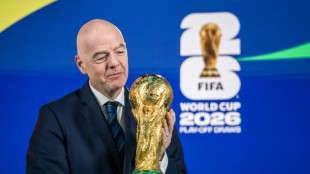
-
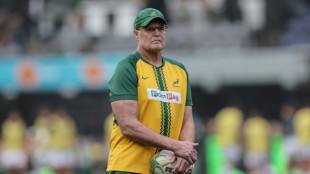 South Africa rugby coach Erasmus extends contract until 2031
South Africa rugby coach Erasmus extends contract until 2031
-
Ex-Manchester Utd star Lingard announces South Korea exit

-
 Australia edge ominously within 106 runs of England in second Ashes Test
Australia edge ominously within 106 runs of England in second Ashes Test
-
Markets rise ahead of US data, expected Fed rate cut
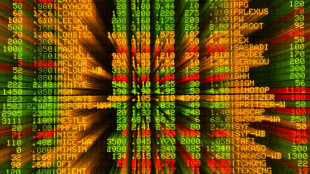
-
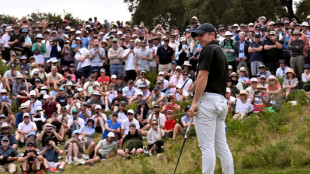 McIlroy survives as Min Woo Lee surges into Australian Open hunt
McIlroy survives as Min Woo Lee surges into Australian Open hunt
-
German factory orders rise more than expected
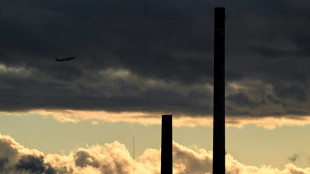
-
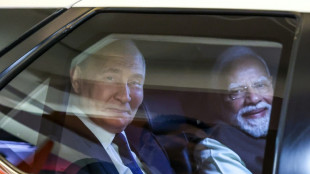 India's Modi and Russia's Putin talk defence, trade and Ukraine
India's Modi and Russia's Putin talk defence, trade and Ukraine
-
Flooding kills two as Vietnam hit by dozens of landslides
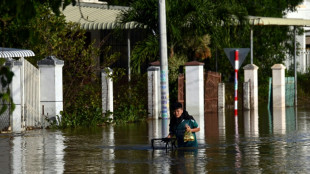
-
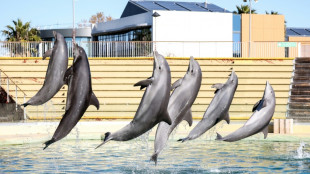 Italy to open Europe's first marine sanctuary for dolphins
Italy to open Europe's first marine sanctuary for dolphins
-
Hong Kong university suspends student union after calls for fire justice

-
 Asian markets rise ahead of US data, expected Fed rate cut
Asian markets rise ahead of US data, expected Fed rate cut
-
Nigerian nightlife finds a new extravagance: cabaret

-
 Tanzania tourism suffers after election killings
Tanzania tourism suffers after election killings
-
Yo-de-lay-UNESCO? Swiss hope for yodel heritage listing

-
 Weatherald fires up as Australia race to 130-1 in second Ashes Test
Weatherald fires up as Australia race to 130-1 in second Ashes Test
-
Georgia's street dogs stir affection, fear, national debate

-
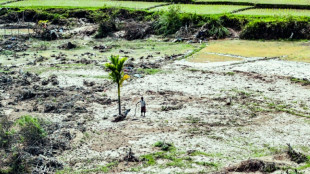 Survivors pick up pieces in flood-hit Indonesia as more rain predicted
Survivors pick up pieces in flood-hit Indonesia as more rain predicted
-
Gibbs runs for three TDs as Lions down Cowboys to boost NFL playoff bid

Taiwan: Is the "Silicon Shield" collapsing?
Taiwan, long regarded as a linchpin in the global technology supply chain, faces an uncertain future as its vaunted “silicon shield”—the notion that its dominance in semiconductor production deters aggression—comes under strain. The island’s strategic importance, driven by the Taiwan Semiconductor Manufacturing Company (TSMC), which produces over 90% of the world’s most advanced microchips, has historically offered a degree of protection against threats, notably from China. However, recent policies from United States President Donald Trump are raising fears that this shield may be crumbling, leaving Taiwan vulnerable at a time of escalating geopolitical tension.
The Silicon Shield: A Fragile Bastion
The concept of the silicon shield posits that Taiwan’s indispensable role in supplying cutting-edge semiconductors to the world—powering everything from smartphones to artificial intelligence—acts as a deterrent against military action, particularly from Beijing, which claims the island as part of its territory. The theory rests on the catastrophic economic fallout that would follow any disruption to TSMC’s operations, a scenario that would cripple global supply chains and affect major economies, including the U.S. and China itself. For years, this economic leverage has been Taiwan’s unspoken safeguard, complementing its military defences and U.S. support under the Taiwan Relations Act.
Yet, this shield is not impervious. China’s growing military assertiveness—demonstrated by large-scale drills encircling Taiwan in October 2024—and its advancements in domestic chip production have already cast doubt on the shield’s durability. Now, Trump’s aggressive economic strategy is adding a new layer of jeopardy, threatening to erode Taiwan’s technological edge and, with it, the island’s strategic security.
Trump’s Tariff Threat:
Since reclaiming the presidency, Trump has doubled down on his “America First” agenda, targeting Taiwan’s semiconductor industry with a bold and controversial plan. In a speech to Republicans on 27 January 2025, he proposed tariffs of up to 100% on imported microchips, arguing that Taiwan had “stolen” America’s chip industry and that such measures would force production back to U.S. soil. “They won’t want to pay a 25%, 50%, or even 100% tax,” Trump declared, framing the policy as a means to revitalise American manufacturing.
This stance marks a sharp departure from his first term, during which he bolstered Taiwan through arms sales and diplomatic engagement, including a historic call with then-President Tsai Ing-wen in 2016. Now, his rhetoric portrays Taiwan less as an ally and more as an economic rival. His administration has also questioned the $6.6 billion in grants awarded to TSMC under the 2022 CHIPS and Science Act for a factory in Arizona, with Trump dismissing it as a “ridiculous programme.” Such moves signal a transactional approach, echoing his earlier demands that Taiwan “pay” for U.S. defence support.
Economic and Strategic Fallout:
The implications of Trump’s plan are profound. For Taiwan, tariffs would not only raise costs for U.S. importers—likely passed on to consumers—but also jeopardise TSMC’s investments in American facilities, which now total $65 billion. Taiwanese Premier Cho Jung-tai has vowed to maintain the island’s tech leadership, announcing on 28 January 2025 that the government would explore “cooperative plans and assistance programmes” to shield its industry. Economy Minister Kuo Jyh-huei, meanwhile, downplayed the immediate impact, citing Taiwan’s technological superiority, though analysts warn that prolonged pressure could force TSMC to shift more production overseas, diluting Taiwan’s economic leverage.
Strategically, this shift could weaken the silicon shield’s second layer: the reliance of third parties, particularly the U.S., on Taiwanese chips. If Trump succeeds in relocating significant semiconductor production, Taiwan’s role as a global chokepoint diminishes, potentially reducing the incentive for Washington to defend the island. This fear is compounded by Trump’s ambiguous stance on Taiwan’s defence, having dodged questions in 2024 about whether he would intervene if China attacked, instead noting the island’s distance—9,500 miles from the U.S. versus 68 miles from China.
China’s Opportunistic Gaze:
Beijing, which has never renounced the use of force to achieve unification, may see an opening. While China relies heavily on TSMC—despite progress with firms like SMIC—some analysts argue that Taiwan’s chip prowess is less a shield and more a prize, incentivising control over the industry. Trump’s policies could accelerate this calculus. Posts on X suggest a growing sentiment that his approach might “incentivise Taiwan to capitulate” by undermining its economic defences, though such views remain speculative.
Taiwanese officials remain defiant. The foreign ministry, responding to Trump’s tariff threats, reiterated on 28 January 2025 that the Republic of China is a “sovereign and independent country,” dismissing any distortion of its status. President Lai Ching-te, who has stressed the “solid as a rock” U.S.-Taiwan partnership, faces the challenge of bolstering defences—currently budgeted at 2.45% of GDP—while navigating this economic onslaught.
A Shield at Risk:
Taiwan’s silicon shield has never been a guarantee, but Trump’s plan introduces unprecedented pressure. By targeting the island’s economic lifeline, he risks not only disrupting global tech supply chains but also weakening a key deterrent against Chinese aggression. For Taipei, the task is clear yet daunting: reinforce its technological edge, deepen international ties, and prepare for a world where its shield may no longer hold. As the U.S. pivots inward, Taiwan stands at a crossroads, its fate hanging in the balance between economic might and geopolitical reality.

Trap laid, Ukraine walked in

BRICS-Dollar challenge

Saudi shift shakes Israel

Al-Qaida’s growing ambitions

Argentina's radical Shift

Hidden Cartel crisis in USA

New York’s lost Luster

Europe’s power shock

Australian economy Crisis

Israel’s Haredi Challenge

Miracle in Germany: VW soars




